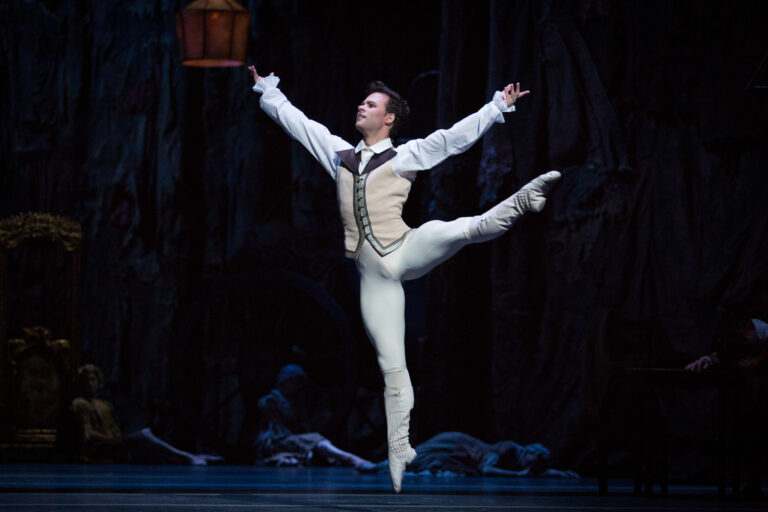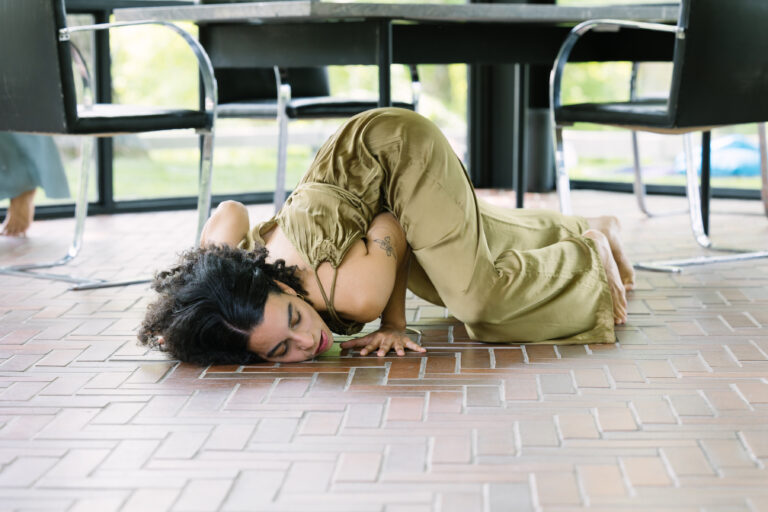
Lizt Alfonso Dance Cuba’s downtown Havana studios are on a plaza where you see few tourists. A historic landmark, the building is now where 1,300 dance students learn the Cubanismo style, 30 of them in its academic program. Artistic director Lizt Alfonso trained in classical ballet at Cuba’s National School of the Arts, but not endowed with what Cubans call condiciones, a “ballet body,” she dreamed of putting all Cuban dance styles onstage in one evening. To critics, her project was overreaching, but Alfonso turned a deaf ear to the word “can’t.”
Laura Alonso, respected teacher and daughter of eponymous ballet figures Alicia and Fernando Alonso, liked her idea. Having hired Alfonso to teach, Alonso also provided her rehearsal space. Cuba’s then-President Fidel Castro saw a performance, and enthusiastic, intervened to remodel the building Alfonso wanted. Besides studios, the building, with its brightly painted walls, has a costume shop, classrooms, a cafeteria, gym, recording studio and offices, and a terrace café. From LADC, specialists in dance, music, costume and stagecraft send company tours to New York, Los Angeles, Toronto, Las Vegas and Tel Aviv.
I asked Alfonso how the school is organized.
How do students advance at LADC?
“It starts with a base consisting of weekly fusion dance fundamentals, Interest Circles, for children 6 to 10 with no entrance audition. Level II is Vocational Workshops in which students 6 to 16 take twice-weekly fusion class with working professionals who model repertoire rigors. Eight- to 10-year-olds enter Level III Children’s Ballet. A teaching team of specialists evaluates aptitude, attitude and the child’s record.
The most proficient enter the junior company to master ballet, flamenco, castanets, modern and folkloric dance, learning and performing repertoire at least three times a year. Academic students maintain at least a 90 out of a 100-point average. Children’s Ballet students, 11–14, audition for the Level IV Youth Ballet.
Up to 20 students from age 15 audition for Level V’s Professional Youth Ballet by demonstrating professional career readiness. Highest scoring among them take an intensive, elaborated curriculum and create choreography repertoire for performances, taking some classes with company members. The National School of Art (ENA) and National System of Artistic Education confer the Dance Fusion graduation diploma.
Who qualifies for the company?
Almost all graduates join the company. Those not accepted can and do return to take class for their own enjoyment.
What additional benefits accrue from company dancers heading teams?
Company dancers teach all levels; graduating students are auxiliary teachers and excelling first- and second-year students are monitors. Shared responsibility is key during tours, when substitutes must know students, class objectives, rigor and combinations. It is critical that the training team oversees students’ progress through to professional careers. Continuity is beneficial because those who prepare them know their professional and human qualities, and commitment.
Who else is on staff?
Foremost are regisseurs: former company dancers and masters of repertoire, style and technique. They organize the groups and Children’s Ballet. There are chairs by discipline: ballet, flamenco, fusion and folkloric. We want a stable faculty and staff, committed to training the youngest and also demanding maximum results.
Do guest teachers come?
We welcome guest teachers and choreographers from all over the world, and Cuban teachers from other respected companies and schools.
What about body awareness?
A physiotherapist teaches injury avoidance, nutrition and caring for body and mind, with emphasis on long-term consequences. A medical center treats and follows injuries and illnesses, to achieve mind-body harmony.
Why are school and company under one roof?
Teaching goals feed the company with versatile and virtuosic dancers who model goal-setting based on professionalism. They, in turn, feed the school. Achieving credentials as teachers, choreographers or regisseurs makes transitioning from performing less traumatic. Students radiate excitement, creating a following among family and community. At the same place, in the same space, work that starts with 6-year-olds ends up a decade or so later on the professional stage.



